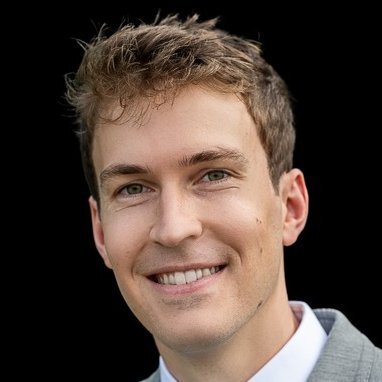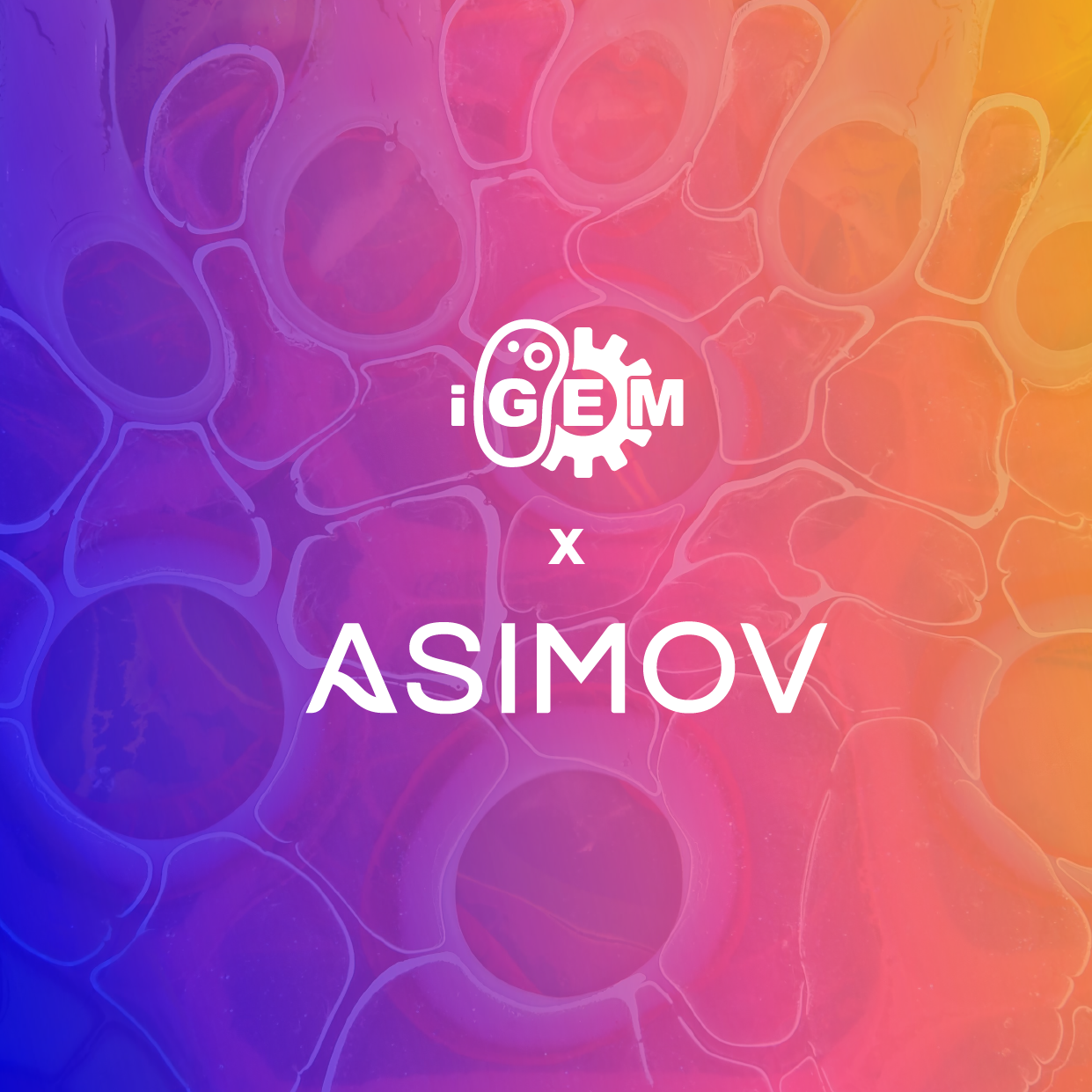Why Engineer Biology?
This essay is part of our Asimov Column, featuring ideas and arguments in biotechnology. We’ll continue publishing regular updates about our team’s work, too.
Many complex problems are caused by molecular imbalances. Type I diabetes is caused by a lack of insulin; obesity in part by a nutrient excess. Climate change is caused by an overabundance of certain gasses in the atmosphere. There is too much plastic in landfills, and the molecules break down too slowly.
Some of the world’s most pressing problems—fertility rates, a scarcity of food and medicines in poor regions of the world, warming climates, stagnant health spans in the West—play out in the world of atoms. Many of these problems can be solved, or at least progress can be made toward solving them, by engineering biology.
Why Cells
Cells have two features that make them well-suited to atom-level problem-solving. First, they are a form of advanced nanotechnology that can be exploited using tools from molecular biology.
Lifeforms harvest atoms from their local environments and rearrange them into astonishingly complex nanomotors and materials. A tree strips carbon dioxide from the air, breaks the molecules apart, and creates sugar. From water and waste, plant cells make woods, grains, pigments and medicines. A single seed contains all the “instructions” necessary to grow into a towering Redwood tree, simply by collecting atoms from the dirt and air to build roots, branches and leaves. Life resembles alchemy, but its mechanisms are rooted in chemistry and physics.

Redwood trees grow more than 300 feet high, and all the instructions required to do so — including bark, leaves, and roots — are contained within a single seed.
Second, cells divide. One cell becomes two, then four, then eight, and so on as long as there is ready access to carbon, nitrogen, hydrogen, phosphorus, and a handful of other atoms. A single E. coli bacterium, dividing every 30 minutes, will form a colony of more than 1 million cells in about eight hours.
This is different from man-made machines, of course. A mechanical engineer who builds a robot must invest similar effort (or slightly less, once a prototype is available) to make a second robot. But not in biology; when a scientist engineers a cell, her manipulations will propagate, divide, and spread without any prodding or instructions. An engineered plant, designed to capture more carbon dioxide from the atmosphere, need only be made once, for its seeds can be planted to grow an entire forest.
Track Record
Polymath Benoît Mandelbrot described the Lindy Effect in 1982, explaining that there is a statistical tendency for things with long pasts to persist longer into the future. A book that has been in print for 300 years is more likely to be around in another 300 years, compared to a book that has only been in print for three years.
The Lindy effect also applies to biotechnology, which has a long track record of solving difficult problems in food, medicine, and climate.
In 1944, Mexican farmers rarely grew wheat because much of their crop was devastated by a disease called stem rust. In 1945, an American agronomist named Norman Borlaug moved to Mexico and, with a small team, crossed thousands of wheat strains to find a variant that could resist the disease. His efforts boosted Mexico’s wheat yields six-fold between 1944 and 1963. Mexico became a net-exporter of wheat. One seed, propagated many times over, fed an entire country.

Cereal production, yields, and land use in Mexico since 1961. Cereal production has soared even as used land remains flat.
Borlaug and his team achieved this feat using tools that would be considered primitive by today’s standards. Their wheat crosses were done in the absence of DNA sequences, and the scientists had little understanding of the molecular mechanisms linking wheats’ genotypes and phenotypes. In the last 60 years, new tools to engineer plants have been used to roughly triple global crop yields. It’s now possible to feed 10 billion people on existing farmland.
As molecular biology tools grow in precision, they are being applied to ever more difficult problems in human health. Since Genentech’s rise in the late 1970s, scientists have invented capable tools to quickly synthesize DNA and insert the molecules into cells, coaxing them to make medicines or other useful molecules.
The first approved malaria vaccine, called RTS,S, is made in precisely this way. A genetic sequence encoding a part of the malaria parasite’s circumsporozoite protein is inserted into living cells, which divide and then produce the molecule. These newly approved malaria vaccines are 75% effective at preventing infections in children, drastically reducing deaths caused by a disease that has killed billions of humans over centuries.
Increasingly, engineered biology is being used to not only make molecules in cells grown outside the body but to directly modify cells that go inside the body. The F.D.A. recently approved the first clinical therapy that uses CRISPR/Cas9 gene-editing, called Casgevy. It’s a treatment for sickle cell disease, a painful condition caused by a genetic change in the beta-globin gene that encodes part of the hemoglobin blood protein.
Casgevy works like this: Stem cells are collected from the patient, edited using CRISPR-Cas9 to coax them into making a fetal form of hemoglobin, and reinfused back into the body. The edited stem cells settle in the bone marrow and make a healthy form of hemoglobin. Voila.
Most modern achievements in biotechnology, such as the new malaria vaccines and Casgevy, work on individuals. In the future, though, engineered biology will increasingly be used to solve problems at a grander scale.
An Illinois-based company called LanzaTech, for example, is already using engineered Clostridium microbes to transform steel factory emissions into ethanol. In 2019, their microbes made 9 million gallons of ethanol from steel waste gas emitted from a single Chinese factory. The company also has a pilot-scale, carbon-negative process to make acetone and isopropanol from factory emissions.

A LanzaTech factory makes ethanol using bioengineered microbes that feed on steel emissions.
In the state of Georgia, a company called Living Carbon has planted hundreds of engineered poplar trees that “can capture 27% more carbon dioxide due to a faster growth rate and accumulation of 53% more biomass.” Although these trees are still being tested in early field trials, it’s clear that our ability to engineer multicellular organisms is increasing.
Soon, living cells will solve planetary problems.
Why Now
In the last five years, the F.D.A. granted full approval to an mRNA product for the first time and the W.H.O. recommended the life-saving RTS,S malaria vaccine for children. In the last few months, a large clinical trial by the drug company Gilead demonstrated that a twice-yearly antiviral drug has an efficacy of 96–100% in preventing HIV and a genome editing technology was used to insert more than 11,000 bases of DNA into precise locations in plant genomes for the first time. These achievements will improve the lives of many people. They also suggest, at least anecdotally, that now is a good time to work in biotechnology.
For one, this is really the first generation where direct molecular observation and manipulation of living cells is possible. Commercial DNA sequencers and synthesizers, as well as most practical gene-editing tools (from zinc-finger nucleases to TALENs and CRISPR) were invented recently; in the last 25 years. The cost to sequence a nucleotide of DNA fell from about $20 in 1990 to fractions of a penny today. The cost to “write”—or synthesize—a base of DNA fell by four orders of magnitude between 2000 and 2017. It’s now relatively cheap to sequence and make strands of DNA that can, in turn, be used to engineer cells.
Bioengineering tools are also being democratized at an accelerating pace. A method to make short strands of DNA, invented in 1955, was not commercialized until 1980 (a span of 25 years). Zinc-finger nucleases and TALENs, developed in 2001 and 2010, respectively, were commercialized within one year. These tools are also appearing before we understand much of how life actually works. We are tinkering with life, often, without holding a blueprint.

Biotechnological tools are being democratized at an accelerating pace. Protein purification, invented in 1937, did not become easy to do (low skill) and cheap (low finance) for several decades. CRISPR gene-editing, by contrast, was being taught in university lab courses just three years after its invention. Adapted from Jackson S.S. et al. Nature Biotechnology (2019).
There are also many low-hanging fruits in biology, broadly. Unlike physics and electrical engineering, where core theoretical principles were solidified in the 20th century and it often costs billions of dollars to make seminal advances, important research in biology can still be carried out for a few thousand dollars.
Much of basic biology is still unknown, even in areas that scientists have explored for decades. E. coli is the most widely studied organism of all time, but one-third of its genes do not have an experimentally-determined function.
Estimates suggest there are between 1 and 6 billion species of life on Earth (but we don’t know for sure), yet only 0.01 percent of them have ever been studied. (CRISPR was initially discovered in a halophilic archaea, called Haloferax mediterranei, that thrives in salty environments.)
If you work on biology, in other words, there’s a good chance you’ll find something useful.
Challenges
Working with atoms is more difficult than working with bits.
In computer science, a $200 laptop can be used to work on a nearly infinite number of software problems. There is no such device in biology. Even simple experiments require DNA, plasmids, cells, a clean workspace, enzymes, and specialized machines. Biotechnology sits somewhere between physics and computer science in terms of “difficulty” and access.
Education is also a major bottleneck. There are not nearly enough resources to learn about molecular bioengineering.
MIT, Stanford and North Carolina State University have excellent undergraduate programs, as do many schools in China, Amsterdam, Denmark, and elsewhere. But hands-on training in gene-editing and the minutiae of cellular engineering can often only be obtained by first completing an undergraduate degree in biochemistry or other “classic” field, and then entering graduate school to specialize more deeply.
Fortunately, alternative education initiatives are emerging. Courses such as “How to Grow (Almost) Anything” at MIT allow students anywhere in the world to program lab robots and engineer cells in Cambridge. Teaching assistants send data back to the remote students. Community colleges, such as Laney in San Francisco, offer excellent hands-on biotechnology training programs. Other small colleges are poised to follow. I’ll have more to say about education in a future essay.
There are many paths into biotechnology, and entering through unconventional channels may actually be advantageous.
On a recent visit to MBC BioLabs, an incubator for small biotech companies in San Francisco, I met a venture-backed founder who does not have a Ph.D. This founder trained as a physicist and mathematician and then read textbooks and talked to people until they felt ready to launch the company. Their background in mathematics and physics was critical, because the company is operating at the interface of biology and many different quantitative disciplines.
I trained as a biologist but don’t feel equipped to make important advances in physics or mathematics. But the converse is not true. Physicists and mathematicians can—and already have—made many seminal impacts on biology.
That’s because biology research is extremely broad in scope, and therefore open to all. Many great molecular biologists trained first in physics or math; Louis Pasteur, Max Delbrück, and Francis Crick among them. Synthetic biology, a field formed at the turn of the 21st, was also started by physicists, including Michael Elowitz at Princeton and James Collins at Boston University.
It is these outsiders who often propose risky experiments and have the audacity—or perhaps a useful naïveté—to see them through. Elowitz and Collins not only declared that cells could be “programmed” with synthetic DNA, but actually built logic-performing gene circuits to pull it off. These physicists drew upon their experience with atoms and forces, and turned it loose upon the biological world.
So regardless of your past, biotechnology can be your future. This is an exciting place to be, for biology is fast and slow, small and large. Chemical reactions in a cell happen in millionths of a second, even as organisms adapt and evolve over billions of years. There are organisms that measure one micron across, and “superorganisms” composed of trillions of interconnected cells spread over hundreds of acres.
Molecules within cells are governed by the laws of physics, much like anything else. If you understand those molecules, and learn to manipulate them, you too can correct imbalances and solve important problems.
***
Niko McCarty is Head of Creative at Asimov and a founder of Asimov Press.
Thanks to Xander Balwit, Ben James, Alec Nielsen and Ben Gordon for reading drafts of this essay. Elements of this essay are inspired by research and writing by Tony Kulesa, Michael Elowitz, Elliot Hershberg, Drew Endy, and Rob Carlson.





